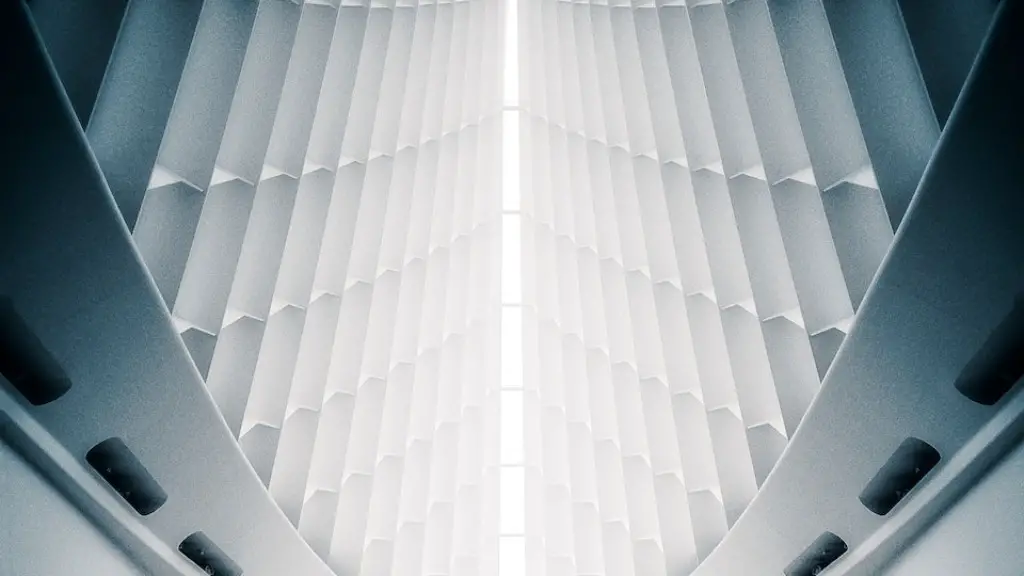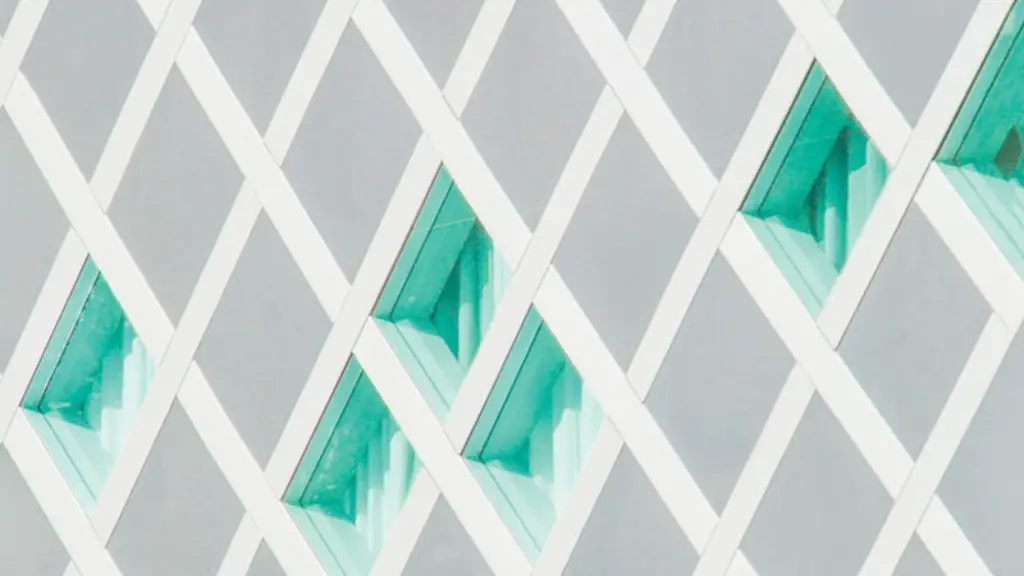In recent years, there has been a shift in the field of architecture towards what is known as generative design. This type of design is based on the uses of algorithms and other computer-based tools to create complex, three-dimensional structures. This approach often results in more efficient and expressive forms than those that are created through traditional methods.
Generative design is a design methodology that focuses on the generation of new ideas or solutions. Typically, a designer will start with a set of requirements or constraints and then use a variety of methods to generate new ideas that meet those requirements. Once a set of potential solutions has been generated, the designer will then evaluate them against the original requirements and choose the best option.
Generative design has been used in a variety of fields, but it is particularly well suited for architecture. This is because architecture is a field where there are often multiple competing objectives, such as aesthetics, function, and cost. Using a generative approach can help to ensure that all of these objectives are considered and that the best possible solution is found.
What is the meaning of generative design?
Generative design is a design exploration process in which designers or engineers input design goals into software, along with parameters such as performance or spatial requirements, materials, manufacturing methods, and cost constraints. The software then generates a variety of potential solutions based on those input parameters. The designer or engineer can then evaluate the potential solutions and select the one that best meets their needs.
There are several examples of generative design and additive manufacturing being used to enhance the performance of a part. For instance, automotive manufacturer General Motors redesigned a seat belt bracket using Autodesk’s generative design solution and metal 3D printing. This allowed them to create a lighter, stronger bracket that could be mass produced more efficiently.
What is the basic principles of generative design
Generative design is a powerful tool for designers to explore the vast space of possibilities for a given design problem. By rapidly generating and evaluating a large number of potential solutions, generative design can help identify the best possible solution for a given set of constraints. This iterative design process can be used to generate a wide range of outputs, from simple shapes to complex structures. In the second phase of the process, designers can provide feedback to the generator to explore the feasible region further and identify preferred outputs or change input parameters for future iterations.
Generative design is a type of design that focuses on the generation of new ideas or solutions. It is a process that is often used in fields such as architecture, engineering, and manufacturing. Generative design has the potential to create a wide variety of design options, allow for easy changes, produce great products, save time, reduce costs, provide creative inspiration, present opportunities for smaller-scale designers, and ultimately represent the future of design.
What is generative design in CAD?
Generative design is a type of computer-aided design (CAD) in which a designer collaborates with artificial intelligence algorithms to generate and evaluate hundreds of potential designs for a product idea. The generative design process starts with defining the goals and constraints of the project. After that, the designer provides the AI algorithms with a few example designs that meet the objectives. The AI algorithms then use these examples to generate hundreds or even thousands of new designs. Finally, the designer evaluates the generated designs and chooses the best one(s) to manufacture.
Parametric design and generative design are both methods used to solve design problems. Parametric design uses parameters and constraints to solve a design problem, while generative design applies algorithms to those same parameters to generate hundreds or thousands of possible design variations to review and choose from.
Why generative design is the future?
According to a recent study, it was found that using additive manufacturing processes, generative design programs can create complex parts that can easily replace multiple single parts. This ultimately reduces the number of parts in the assembly, which can save on production costs and time. The study showed that the benefits of using generative design programs and additive manufacturing processes are many and varied, and that these technologies have the potential to revolutionize the manufacturing industry.
Generative design technology is currently being used by some companies to design parts for 3D printing. This technology has the potential to revolutionize the aerospace, architecture, and construction industries by allowing for the creation of parts that are lighter, stronger, and more durable than what is currently possible.
Who uses generative design
Generative design is a type of design that focuses on the generation of new ideas or solutions. This type of design is often used to solve complex engineering problems. Engineers who use generative design often have to consider many different factors, such as aerodynamics, strength, weight, and manufacturing tolerances. Generative design can be used in many different industries, such as aerospace, architecture, manufacturing, and consumer goods.
The principles of design are the foundation for creating an aesthetically pleasing and effective composition. By understanding and utilizing these principles, you can craft a composition that is eye-catching and memorable.
Emphasis is the use of visual elements to draw attention to a particular area or element of a composition. This can be achieved through the use of color, contrast, size, or placement.
Alignment and balance help to create a sense of order and visual stability. Alignment refers to the placement of elements in relation to each other, while balance ensures that the composition is visually balanced and not overly chaotic.
Contrast is the use of juxtaposing elements to create visual interest. This can be accomplished through the use of color, size, or placement.
Repetition is the use of similar elements throughout a composition. This can create a sense of unity and cohesion.
Proportion refers to the size of elements in relation to each other and to the overall composition. This is an important consideration when crafting a composition that is pleasing to the eye.
Movement can be created through the use of lines, shapes, and color. This can help to guide the viewer’s eye through the composition.
White space is the empty space within a
What are generative techniques?
Generative research is a powerful research method that helps researchers develop a deeper understanding of users in order to identify opportunities for innovation and solutions. Also known as discovery or exploratory research, generative research is used to generate new ideas and uncover hidden needs or issues. By talking to users and observing them in their natural environment, researchers can gain insights that would be difficult to uncover through other methods.
Generative design has the potential to automate many jobs, including those in the construction industry. While this can be a good thing, it also has the potential to make human workers redundant. This is something to be aware of when using generative design.
What is the best design in architecture
There is a wide variety of architectural styles that have been used throughout history. Here are fifteen of the most popular styles:
1. Classical Architecture: This style is characterized by symmetry, order, and proportion. It originated in ancient Greece and Rome and was later adapted by the Renaissance architects.
2. Neoclassical Architecture: This style was inspired by the classical style, but it is more ornate and decorative. It became popular in the 18th century.
3. Greek Revival Architecture: This style was inspired by the classical architecture of ancient Greece. It became popular in the late 18th and early 19th centuries.
4. Industrial Architecture: This style emerged in the late 19th and early 20th centuries. It is characterized by the use of industrial materials such as steel and concrete.
5. Bauhaus Architecture: This style was developed by the German school of the same name. It is characterized by its streamlined and functional design.
6. Victorian Architecture: This style is characterized by its ornate and intricate design. It became popular in the mid to late 19th century.
7. Arts and Crafts Architecture: This style emerged in the late 19th century. It is characterized by its
Generative design is a powerful tool that can be used to create iterative design solutions based on constraints set by the designer or engineer. This process can be used to optimize performance, reduce weight, and decrease manufacturing costs.
What is generative shape design?
CATIA – Generative Shape Design (GSD) allows you to create complex shapes using a combination of wireframe and multiple surface features, while still maintaining full specification capture. This makes it an ideal tool for advanced design work.
Autodesk Revit’s new Generative Design feature is a great way to quickly generate design alternatives based on your specific goals, constraints, and inputs. This can give you higher performing options for data-driven decision making. With Revit 2021, you can now access this feature through the AEC Collection.
Conclusion
Generative design is a design methodology that focuses on the generation of new solutions to problems. It is a relatively new approach that has emerged in the field of architecture in the past few years. The term “generative” refers to the process of generating new solutions; in other words, it is a bottom-up approach to design that focuses on the generation of ideas rather than the imposition of pre-conceived solutions. In contrast to traditional design methods, which often involve a top-down, linear approach to problem solving, generative design is more exploratory and open-ended.
There are a variety of different techniques that can be used in generative design, but the common thread between them is that they all involve some form of algorithmic or computational processes. For example, one common technique is to use evolutionary algorithms, which iteratively evolve solutions towards a desired goal. Another common technique is to use constraint-based optimization methods, which search for solutions that satisfy a given set of constraints.
The advantage of generative design methods is that they can often find solutions that are much better than those that could be found by traditional methods. This is because traditional methods often involve a lot of trial and error, and they tend to be limited by the
In conclusion, generative design in architecture is a process where designers create buildings or other structures by starting with a set of parameters or requirements and then let the computer generate a design. The process can be used to create a wide variety of structures, from office buildings to bridges to homes. Generative design is a powerful tool that can help architects create unique and innovative designs.





